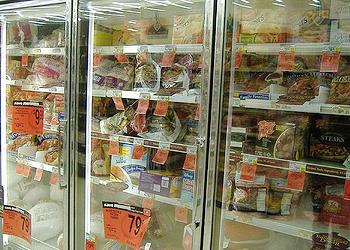BERLIN — Even as showrooms in Europe prepare for the arrival of 2014 vehicles, authorities in France have sparked controversy with a drastic action: blocking the registration — effectively shutting down sales — of some popular new Mercedes-Benz cars, including the A-Class, B-Class, CLA and SL models.
The French environment ministry ordered the ban in response to the German carmaker’s defiance of a
European Union regulation on the refrigerants permitted in automotive air-conditioning systems, and the ministry says that it won’t back down until Daimler, the parent of Mercedes, complies. The European Union, though supportive of France’s position, has agreed to step in and referee to keep the squabble from spreading.
Why such an uproar over a matter as arcane as an air-conditioning refrigerant?
The ban on registrations was put in place after Mercedes refused to switch to a refrigerant compound that is considerably more climate-friendly than the one currently used in almost all car air-conditioning systems. Mercedes contends that in its crash tests and other independent safety research, the replacement material was flammable in cases where it leaked onto hot engine parts, and that it produced a dangerous gas when burned — increasing the potential harm to passengers in an accident.
European regulators have agreed to review the German test results as part of the process of resolving the tiff. Because of the safety concerns, Germany’s Federal Motor Transport Authority approved the new models for sale with the current refrigerant, a position that escalated the matter from a disagreement over technology to a political dispute.
The issue is of interest to American automakers, as regulators in the United States are likely to consider the new European rules. Naturally, it would benefit the global auto industry to select one common refrigerant for all markets, making it possible to build a single air-conditioning system for domestic and export models.
The imbroglio heated up in the 1970s, when the refrigerant compound known as R-12, a chlorofluorocarbon, was deemed a threat to the earth’s protective ozone layer. Like other fluorocarbons, it was outlawed and replaced with supposedly benign alternatives. In the case of vehicles, an ozone-friendly compound known as R-134a took its place. The move is generally regarded to have been effective: since the worldwide shift away from fluorocarbons, the ozone hole has not only stopped growing, it has actually contracted.
But R-134a was found to have its own warts, namely that when leaked, the fluid serves as a potent greenhouse gas, packing a punch 1,400 times as great as carbon dioxide, the Environmental Protection Agency says. When that property came to the attention of the European Union, it mandated that as of 2011 any refrigerant with a
global warming potential more than 150 times that of carbon dioxide would be forbidden in all newly engineered models. By 2017, this ban would apply to all new vehicles sold.
In the search for substitute compounds for R-134a, nonflammable carbon dioxide was championed as a viable alternative, and Mercedes announced this month that it would continue to develop CO2-based systems. Carbon dioxide is commonly used as an industrial refrigerant — worldwide by the Coca-Cola Company, for instance — and is cheap and abundant.
But converting to carbon dioxide-based climate control systems, which require high operating pressures, would entail hardware modifications costing around $130 per vehicle, according to Jürgen Resch, director of the watchdog group German Environmental Aid, based in Berlin.
In Europe, automakers chose a new refrigerant developed by Honeywell International and DuPont, called R-1234yf, that has a far lower global warming potential than R-134a (only four times that of carbon dioxide, according to the E.P.A.) and can replace it without any changes to the hardware under the hood. Honeywell and DuPont control the global supply of R-1234yf, and the companies are forecast to reap billions of dollars in sales.
Mercedes originally complied with the refrigerant directive, but its safety tests showed R-1234yf to be flammable, a finding that watchdog groups agreed with.
“The Daimler tests weren’t the first that showed R-1234yf to be extremely dangerous,” Mr. Resch said. “Four years ago, independent testing came to these conclusions, but at the time the likes of Daimler didn’t want to listen. We were surprised but pleased to see they eventually came to the same conclusion.”
Late last year, Mercedes recalled cars fitted with R-1234yf-based cooling systems, saying the company would return to R-134a until a better substitute was found.
France says it will remain steadfast. The registrations of noncompliant Mercedes models “will remain forbidden in France as long as the company does not to conform to European regulations,” the environment ministry told Reuters.
The blocked models account for most of Daimler’s French business and 2 percent of its global sales. Daimler is contesting the ban in court, and a hearing was scheduled for Aug. 23.
The tussle might lead to a better solution for all parties, including American carmakers. Proponents of carbon dioxide, water and air-based air-conditioning systems say that Honeywell and DuPont squeezed them out of the competition before they could get a fair hearing.
The German automakers, at least, are ready to look again. According to Der Spiegel, the German weekly, an air-cooled air-conditioner is nearly ready for market and would already be on the road had the playing field for a replacement system been level.



